Today’s feature is from correspondent Dave Spaulding.
I have been studying armed conflict for over four decades. I went places, talked to people, viewed autopsies, read reports, made contacts, collected data. Today, all it takes is watching videos. If I could have done it easily, I would have, but I certainly don’t regret the journey. I met outstanding people, visited interesting places, had educational conversations, and made friends for life. The network I created was invaluable, though it grows smaller as folks retire or pass away.
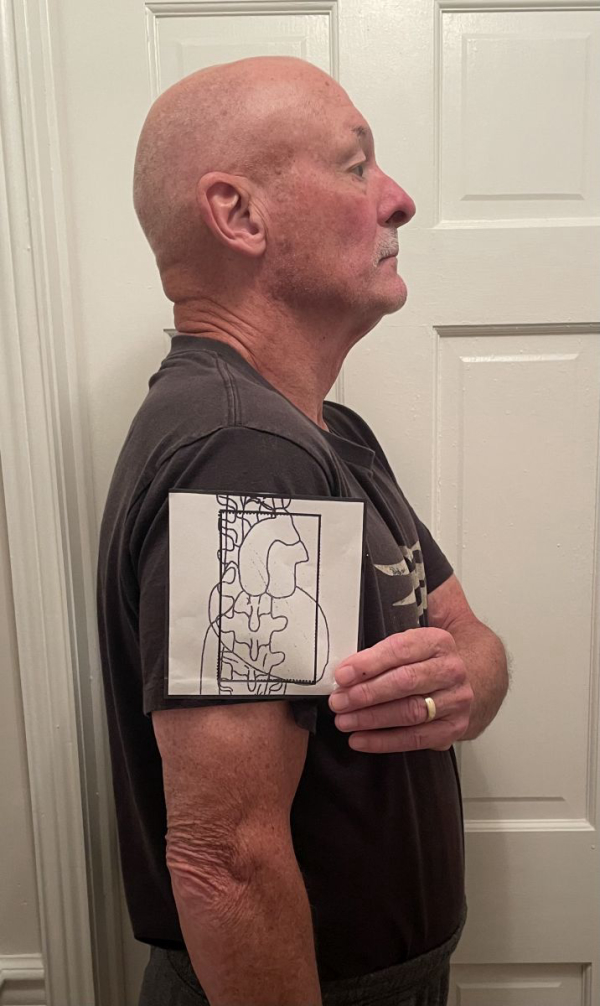
I came away with two “truths” regarding gunfights. One, every time you enter conflict you run the risk of losing. Being highly trained is an advantage, but it doesn’t mean you will always prevail. Two, while the human organism is not hard to kill, it can be difficult to stop quickly. To do this, you must violate specific areas of the body that are small and might require multiple hits. It’s true that any hit can stop an attacker, but there are few locations that ensure rapid incapacitation.
The medulla oblongata, located in the back of the head connecting the brain and spinal cord, is the most critical. Face forward, it is behind the nose. It is a key conduit for nerve signals and controls vital processes like breathing, heartbeat, blood pressure and reflex actions like coughing and swallowing. It controls life functions. If damaged, incapacitation is almost instant.
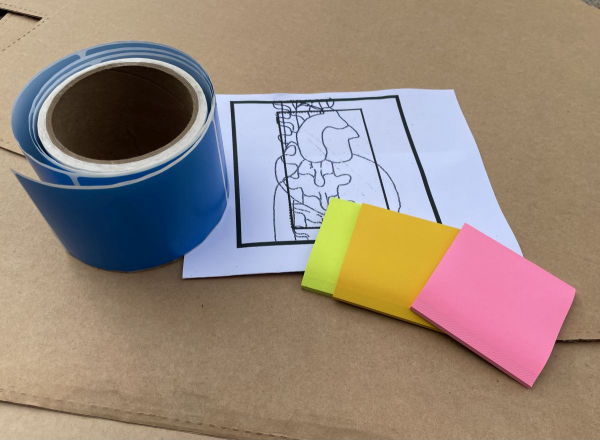
A head shot is not the same as shooting the medulla. The brain is the body’s most vital organ and it is well armored. Most everyone has heard of people shot in the head without penetration, especially with handgun rounds. I have seen it on several occasions and all looked quite similar; the victim went to the ground. A shot to the head, even without penetration, is a serious situation. The victim won’t likely have a round bounce off his head and keep going as if nothing happened. Head shots are “noticed.”
The heart and aorta are the pumping station that supplies blood to the body. Without it, the body shuts down. It’s a very serious wound, but keep in mind the heart is a muscle constantly exercised so it’s tough. And even if destroyed, the brain is oxygenated enough to keep functioning for a short period. The spinal column runs the length of the torso but its thin and buried deep unless you are shooting from the rear.
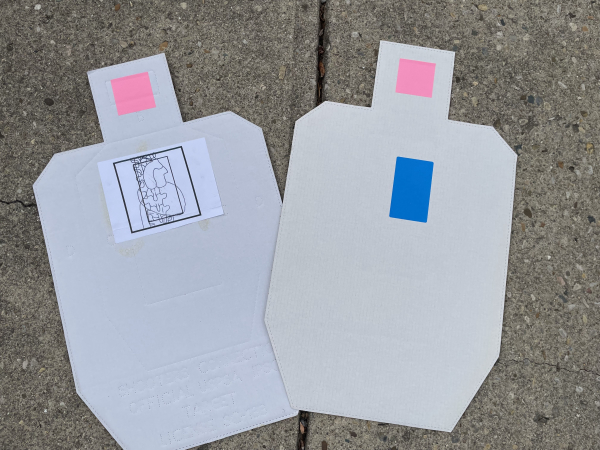
We need to place our rounds where they will do the most damage. It is easier said than done. Due to security and body cameras, gunfight footage is readily available and most have seen them. Watching should be part of your training but what I suggest is that you get enough information to know what is happening and then turn down the sound. Watch the video several times and consider what you see. Then listen to the commentary. You might not agree and that is okay. Critical thought creates a more prepared combatant. What you will see is many gunfights look more like a Rugby scrum than a range session, making shot placement difficult.
How do we prepare for this? By working hard to hit vital areas and not accepting mediocrity. Too many are obsessed with speed and speed is important, but only if it results in a hit that will stop the fight. An instructor once told me, “There are few problems a .80 draw won’t fix.”
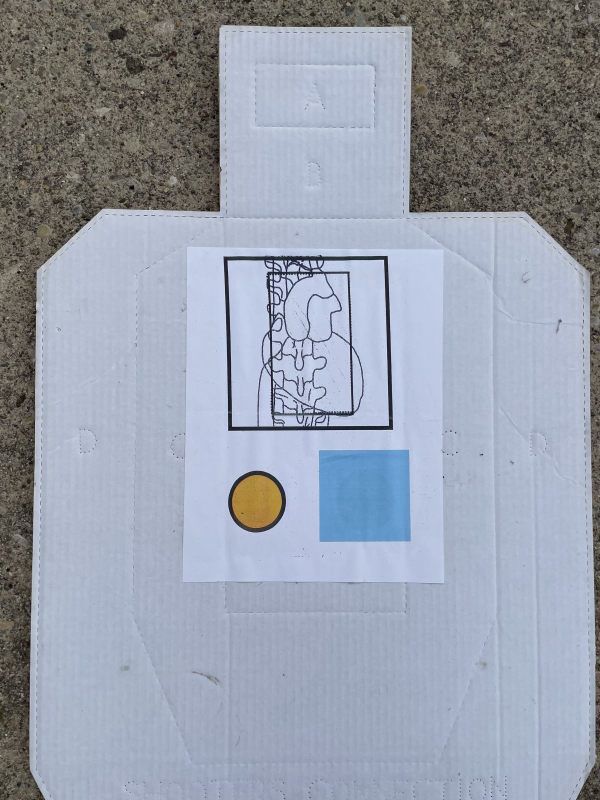
It won’t fix the 3 to 5 second lag time to recognize an in-progress attack. Aggressive lateral movement might be a better option if your opponent’s gun is in play. My standard is two seconds, but it’s shot at 7 yards on a six-inch square from concealment while moving laterally.
I like drills that require speed on a small target. Larry Vickers’ “The Test” or Tom Givens’ “Old West Qualification” are good examples. Both have challenging time standards on targets small enough to represent vital areas of the body. In my practice sessions, I use drills with small targets and challenging time standards. I also move to shoot which happens frequently in real gunfights. I use three targets: a 6- inch square, a 3 x 5 rectangle and a 3-inch square.
The 6-inch square represents the high chest where many vital organs are located. I use it instead of an 8-inch circle due to the size of the human torso. Few people, even the largest, display an 8-inch circle from the side. The 3 x 5 rectangle represents the heart and aorta while the 3-inch square includes the eye and nose socket entry to the brain and the medulla. From the side, the ear canal and spinal column including the medulla. I place them on an USPSA/IDPA silhouette target and a t-shirt can be used to cover it to train shot placement.
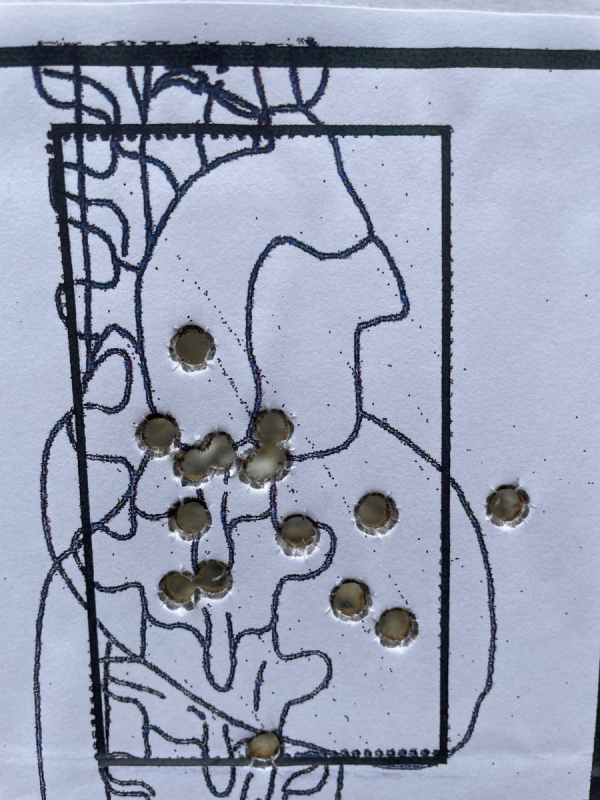
These targets come in the form of peel off labels and Post-It Notes. I have several drills in which I use them and they can be found on the Handgun Combatives YouTube channel. But I also like to use them for other popular drills. For example, my version of The Test dispenses with the B-8 scoring rings and goes right to the X ring. I shoot ten rounds at ten yards with all hits on the 3-inch square. There is no graded scoring which I know folks like, but I think of it like a fight, you are successful or you are not.
I like the story behind the Old West Qualification, being a bit of an old west aficionado. Shooting playing cards is fun and the 52-week challenge is an excellent exercise in discipline. A 3-inch Post It Note is the same surface area as a playing card, so I shoot this drill on one placed in the head box of my target. I think it gives the drill a more combative “feel.”
These simple targets are peel and stick and can be ordered online. While drills are fun and a great pastime, being able to hit vital areas of the body quickly, combined with motion, is more important. Shot placement should be the primary emphasis of any training/practice regimen. Speed is essential but only if you achieve shot placement. If you are making your targets bigger to satisfy your timer, you do not understand the problem and are likely endangering yourself and those you care about.
— Dave Spaulding